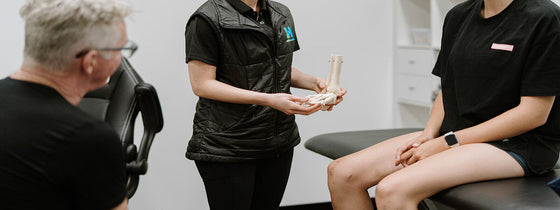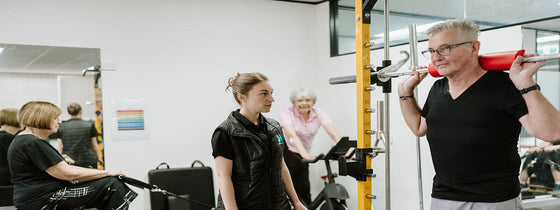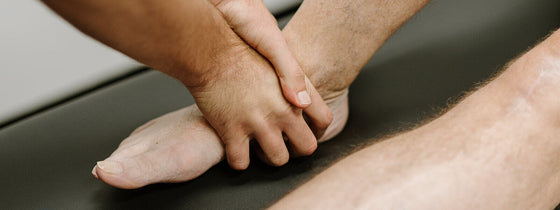My shoulder popped out…. What should I do? Shoulder dislocations and subluxations are prevalent in many Australian sports such as AFL, rugby, wrestling, and boxing. A subluxation is where the humeral head (upper arm bone) in the shoulder joint slips out of the socket because of impact or weakness in the shoulder. In the case of a subluxation, the shoulder goes back into place on it’s own at the time of injury. When a shoulder dislocates, the humeral head slips forward out of the shoulder and does not slips back into place. In the case of both a subluxation or a dislocation, physiotherapy is vital to reduce the chance of the recurrences that often come after one dislocation or subluxation occurs.
How does a shoulder dislocated you may ask? Dislocations most commonly occur when a player’s arm moves out into an overhead position (abduction and external rotation), a person falls onto an outstretched arm or with direct trauma to the joint. These scenarios generally result in the joint coming out forwards and is referred to as an anterior dislocation. Anterior dislocations are the most common shoulder dislocation, accounting for 95% of cases. However, the shoulder can also dislocate out the back (posteriorly) but this seen no where near as commonly in sports as the anterior dislocation and in this blog, we will focus on anterior shoulder dislocations.
As a physio, a common thing we hear is ‘’its okay, I just popped it back in on my own! It happens all the time’’. Let me start by saying the most important thing to do when a shoulder dislocates is to NOT, I repeat, NOT relocate the shoulder on your own. It is imperative that a licensed healthcare professional in the form of a trained emergency doctor or Orthopaedic surgeon relocates the joint. The reason being that the shoulder is a very complex highway of nerves, arteries and veins and relocating the shoulder yourself puts you at risk of damaging these structures if incorrect technique is used.
Following most subluxations and dislocations, the tendons, ligaments, and muscles around the shoulder become stretched resulting in weakness and instability. As a result of this, players are placed at a greater risk of suffering a subsequent dislocation or subluxation incident.
In the event of a subluxation or dislocation, it is important for the shoulder to be thoroughly assessed by a physiotherapist to deem what is the best course of action- surgical or conservative management. The truth is not all shoulder dislocations require surgery and we always try a period of conservative management before resorting to surgical interventions.
When a shoulder dislocation does occur, surgery may be required as a result of the subsequent injury that occurs to the joint capsule. Injuries such as Bankart lesions, Hill-Sachs defects and rotator cuff tears are often seen after a traumatic anterior shoulder dislocation and surgery is required to fix them. However, it is best to have a physiotherapist examine the shoulder to investigate the presence of these complications and an MRI can help to see the extent of the injury. If surgery is required, a discussion between patient, surgeon and physiotherapist is best to determine the best course of action.
If surgery is not required following a dislocation, early stage rehab is focused on settling down pain and improving joint position. From there, we can begin to focus on improving strength, control and positioning of the joint to reduce the risk of a further incident.
In the case of surgery, there is a long phase of recovery as guided by a physiotherapist focusing on the use of a sling, gentle shoulder range of motion exercises and progressing back into strength and awareness exercises. The timeframe for recovery varies depending on individual circumstances like the severity of the injury, patient age and what sport they would like to return to.
Where and how do I do my rehab? Our expert clinicians can guide you through your rehab using home exercise programs , gyms and our group physiotherapy classes as necessary. When returning to sport, easy does it. Listen to your physio, ensure a good warm up and make sure you have been cleared by your physio and surgeon and you feel ready. There’s no need to rush it!
Will tape help? Upon return to sport shoulder taping can be a helpful way to protect the joint and provide sensory feedback to the player to keep the joint from sublaxing. However, this does not necessarily stop the shoulder from dislocating or sublaxing again.
If you or someone you know has dislocated their shoulder in the past and did not seek out treatment, or has undergone a surgical repair and needs guidance then get into contact with our amazing team of clinicians who look forward to meeting, assessing and guiding you through your rehabilitation process to get you back to your optimal health and performance.

If you're experiencing back or neck pain with neurological signs and symptoms, a thorough neurological examination is crucial for accurate assessment and effective treatment. In this Optimal Tip learn more about what we mean by completing a neurological exam!

Squats, deadlifts, and calf raises are key movement patterns that should be part of every strength and conditioning program—regardless of age and activity level. These functional movements support joint health, improve posture and balance, and reduce the risk of injury while building strength where it matters most.

A ganglion cyst is a fluid-filled swelling that typically forms over a joint or tendon sheath, causing discomfort and pain, especially when pressing against nerves or joints. Proper assessment and treatment, including physiotherapy, are essential for managing symptoms and improving function in the presence of a ganglion in your hand, foot, or wrist.